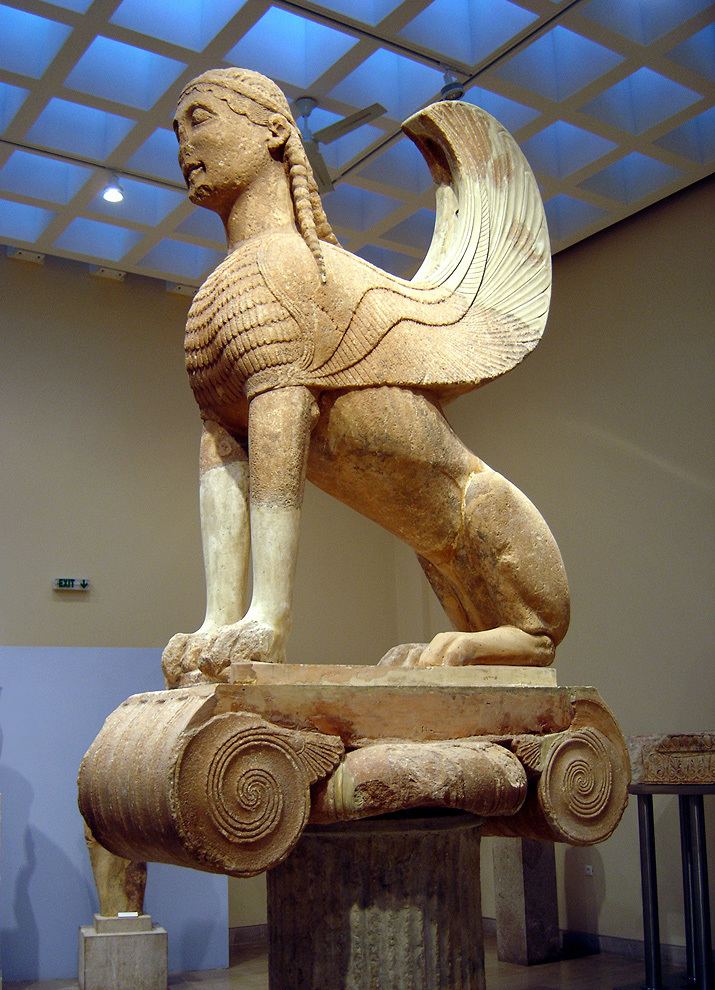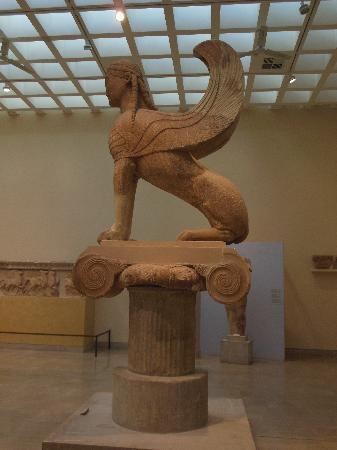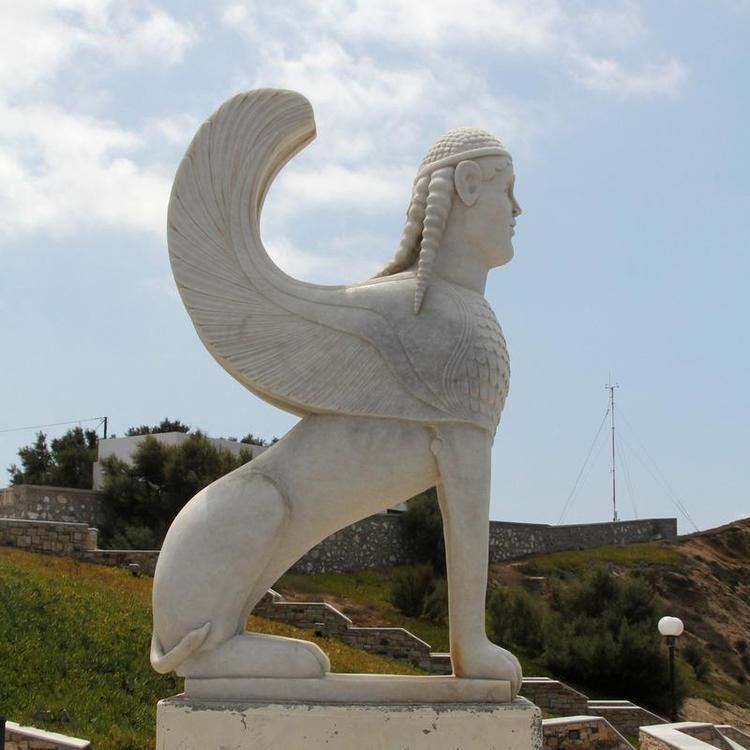Name Sphinx Naxos | ||
 | ||
The Sphinx of Naxos
The Sphinx of Naxos (now in the Archaeological Museum of Delphi) is a colossal statue of a mythical creature with the head of a woman, the chest and wings composed of the impressive feathers of a prey bird turned upward, and the body of a lioness, set up on a stele around 560 BC as an offering to the temple of Apollo by Naxos, one of the richest Cycladic islands at the time. The overall height of the statue, the column and its base topped 12.5 meters.
Contents

sphinx of naxos, Delfi
Description

The famous Sphinx of the Naxians stood on a column that culminated in an Ionic capital.
The statue of this mythical creature stood on a towering Ionic column, which may have been the oldest Ionic construction project in the site of the Oracle of Delphi. Her statue had been set up close to the Halos, the most sacred spot of Delphi, where Apollo had presumably killed the python. According to tradition and its mythological representation, the Sphinx had the face of a woman bearing an enigmatic smile, prey bird wings, and the body of a lioness. It was carved from a large piece of Naxian marble. The solid construction combined elements that gave the statue a character of motion and vitality, such as the decorative details to depict the hair, chest, and especially the wings that were the most impressive. The monument was made entirely of marble and reached 12.45 meters in height. The monument created awe to the visitors and constituted a typical example of Naxian sculpture in its peak period, i.e. in the sixth century B.C.
On the base there is an inscription dated to 328-327 B.C., renewing the promanteia for the Naxians: «ΔΕΛΦΟΙ ΑΠΕΔΩΚΑΝ ΝΑΞΙΟΙΣ ΤΑΝ ΠΡΟΜΑΝΤΗΙΑΝ ΚΑΤΤΑ ΑΡΧΑΙΑ ΑΡΧΟΝΤΟΣ ΘΕΟΛΥΤΟΥ ΒΟΥΛΕΥΟΝΤΟΣ ΕΠΙΓΕΝΕΟΣ» (Delphi accorded the Naxians the right of Promanteia as before, at the time of archon Theolytos and Epigenes the Bouleutes). Thus, the Naxians had the right to acquire oracles first.
